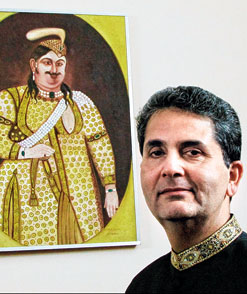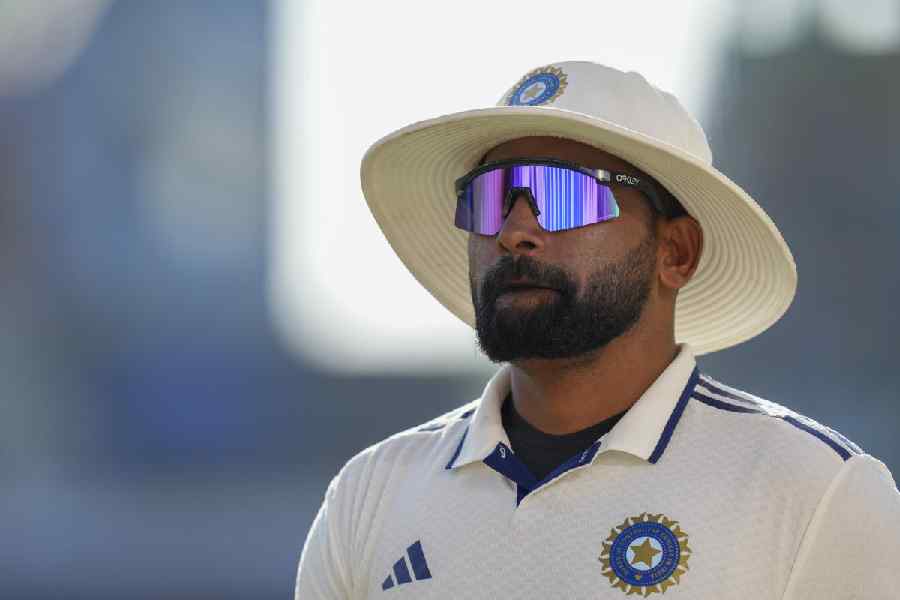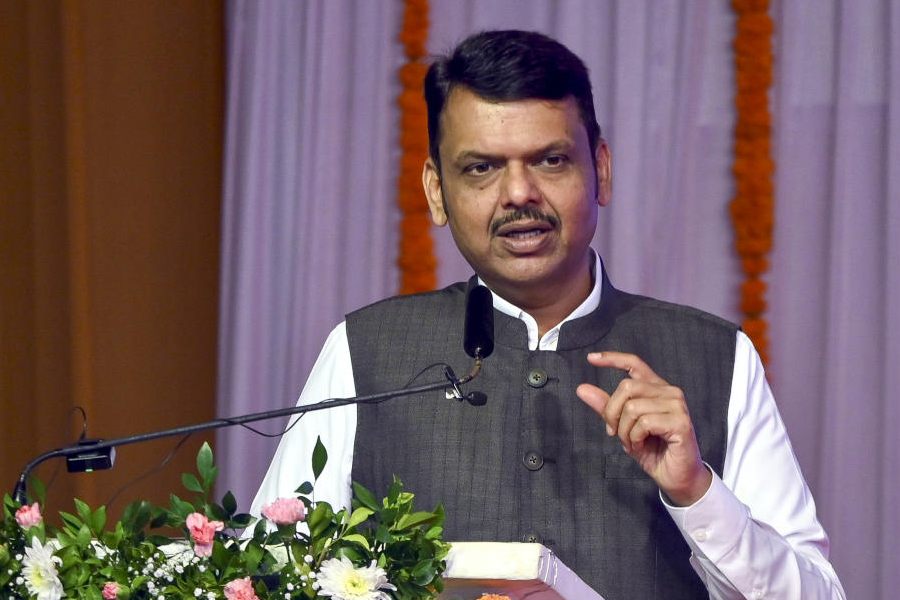 |  |
| Shahanshah Mirza, a descendent of Wajid Ali Shah, poses next to the nawab’s portrait; kite flying on the Maidan | |
May 13, 1856! Nawab Wajid Ali Shah stepped on the gangway of McLeod the steamer as it moored at Bichali ghat in Metiabruz after a long journey from the dry summer of Lucknow to the sultry heat of Calcutta.
Little did he realise then that he would spend the remaining 31 years of his life in this city.
The gleaming water on the portside mirrored his immediate fate — that he was no longer the ruler of Awadh, his prosperous kingdom usurped by the East India Company.
Land on the starboard, a bustling Calcutta, gave him hope — the British governor general would rule the case in his favour and make him a king again. He had faith in the British sense of fair play and justice.
He was to realise soon that the governor general was there to promote the company’s interests, not some Indian nawab. He even sent his mother, brother and son to England to argue his case before the Queen and the British parliament. The king who never took no for an answer was flooded with a deluge of Nos.
Whatever little hope he had nurtured of getting back the throne of Awadh was dashed when Indian sepoys declared war against their British masters in 1857.
Fearing that the “mutineers” could rally around Wajid Ali Shah and start a rebellion in Calcutta, the establishment put the deposed nawab under house arrest at Fort William for 26 months.
On his release, he decided to stay back in Calcutta choosing Metiabruz as his new adopted land.
Wajid Ali Shah’s retinue from Lucknow included his family and a large group of royal retainers, chefs, hakims and advisers.
When news spread that the nawab wouldn’t leave Calcutta and has decided to recreate the magic of Lucknow in this new suburb, many of his loyal subjects followed their former ruler.
The influence of the nawab and his Lucknowi andaaz started to show as Metiabruz morphed into a shahi mohalla replete with the trappings of royalty and nobility, especially pastimes such as flying kites, cock-fighting and poetry recitals. Muharram was observed with great enthusiasm.
Palaces and imambaras (place of worship) abutted the alleys where the fragrant smell of biryani or the robust rhythm of kathak wafted along. The nawab, known to introduce the Moghul culinary delight to the city that finally transformed into the delectable Calcutta biryani, was quite a sport as he made kite flying popular among the masses.
The sport soon caught on with the rajas, maharajas and zamindars of 19th-century Bengal, becoming the favourite pastime of all and sundry. I have heard ruinous stories of kite enthusiasts losing huge fortunes on this sport, but achieving prominence and respect in the kite-flying circles of the time.
The nawab’s legacy vis-à-vis the sport he pioneered is still alive in many alleys and on rooftops of Calcutta, spawning a cottage industry that employs about 3,000 people directly or indirectly. It may not be the best trade in returns because the backbreaking work fetches only nickels. Nevertheless, it has helped keep a very poor section of society engaged — who could have veered into petty crimes to fill hungry bellies.
The kites made in Metiabruz are sold across the country.
I must have been six when my father first taught me to fly kites and I deeply cherish those fond memories. As I slowly mastered the art it became my passion and perhaps my first love. Every day after school, I would run to the terrace with my kites and spools of thread.
This was before television invaded our homes and the cityscape was clear… no hindrances such as TV antennas or highrises. This was also the age before cell phones and Internet got the better of boyish adventures and innocence.
The evening sky would be clouded with kites of myriad colours. The fight was not for the TV remote, but fought hundreds of feet up in the air as rivals manoeuvred their kites into tangles and tried to pull each other down. One would never get tired working out the winning strategy. Notes were regularly exchanged with my cousins in Lucknow, Patna and Dhaka.
The best birthday gift, of course, was well-balanced kites along with the finest manjha. I was so obsessed that I used to keep them under my bed.
Kite flying was a great leveller too because everybody, no matter how rich or poor he may be, could join in. One of my contemporaries from the kite clique became a notorious criminal but another is a famous Bollywood producer now.
Academic pressure forced me to give up kite flying after high school. My heart is still in the sky with a kite, though.
Times have changed. The boys nowadays are into other sporting activities, giving this 2,800-year-old sport a wide berth.
Kite flying is now restricted to a couple of days in the calendar — Makar Sankranti and Viswarkarma puja.
Annual kite flying festivals organised by different organisations are great steps towards reviving this wonderful sport in our city.
It is a fantastic cultural expression that entwines the past into the present. A nudge from the state government should keep this nawabi pastime flying into the future.











